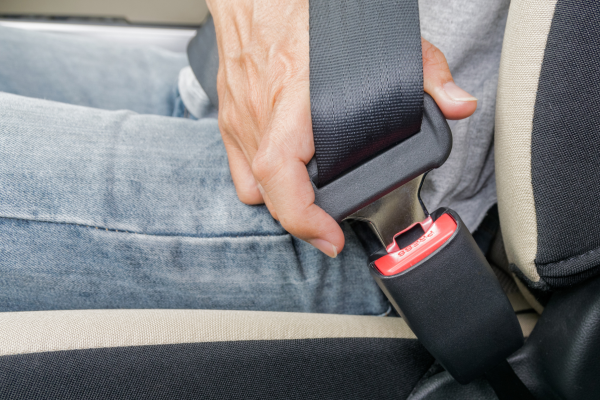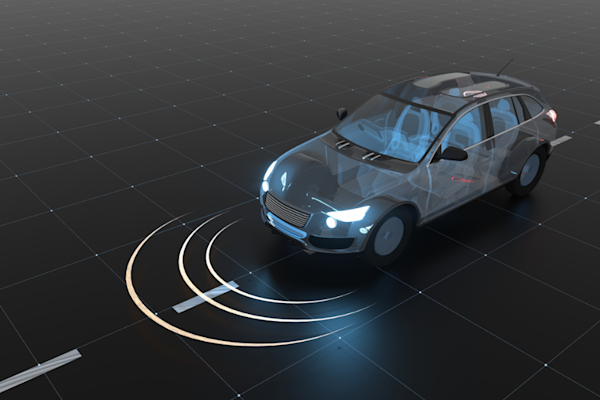Vehicle Safety
Dispelling Common Myths About Seat Belts: Ensuring Safety on Every Journey

Dispelling Common Myths About Seat Belts: Ensuring Safety on Every Journey
Seat belts are a fundamental component of vehicle safety, designed to protect occupants in the event of a collision. Despite their proven effectiveness, numerous myths and misconceptions persist about their use. Dispelling these misunderstandings is crucial for ensuring that everyone appreciates the importance of wearing a seat belt on every journey.
Myth 1: Seat Belts are Unnecessary for Short Trips
One of the most pervasive misconceptions is that seat belts are not needed for short trips or when driving at low speeds. The reality, however, is that most accidents occur close to home and at relatively low speeds. According to the National Highway Traffic Safety Administration (NHTSA), the majority of accidents happen within a 5-mile radius of home. Hence, wearing a seat belt on every trip, no matter how short, is crucial.
Myth 2: Seat Belts Can Cause Injury During an Accident
Another common belief is that seat belts can cause injuries during a crash. While it's true that seat belts can cause minor injuries like bruises or abrasions, these are far less severe than the injuries sustained when not wearing a seat belt. Seat belts are designed to distribute the forces of a crash across the stronger parts of the body and prevent occupants from being ejected from the vehicle, which significantly reduces the risk of severe injury or death.
Myth 3: Airbags Alone Provide Enough Protection
Some people think that airbags make wearing a seat belt unnecessary. However, airbags are designed to work in conjunction with seat belts, not replace them. While airbags provide additional protection, they are not effective on their own. Without a seat belt, occupants can be thrown into the airbag with too much force, causing serious injuries. The combination of seat belts and airbags offers the best protection in a crash.
Myth 4: It's Safe to Hold a Child on Your Lap
This myth is not only dangerous but also illegal in many places. In the event of a crash, the force of impact can cause an adult to crush a child they are holding, or the child can be ejected from the vehicle altogether. Child safety seats and proper restraints are essential for protecting young passengers. It is critical to always secure children in an appropriate car seat or booster seat for their age, height, and weight.
Myth 5: Wearing a Seat Belt is a Personal Choice
Many argue that wearing a seat belt should be a matter of personal freedom. However, seat belt use is a legal requirement in many jurisdictions, and for good reason. Wearing a seat belt not only protects the individual driver and passengers but also other road users. In a crash, unbelted occupants can become projectiles, causing injuries to others inside and outside the vehicle. Laws mandating seat belt use are in place to enhance overall road safety.
Myth 6: Large Vehicles Don't Require Seat Belts
Some people believe that being in a larger vehicle like an SUV or a truck eliminates the need for a seat belt. The size and weight of a vehicle do not eliminate the risk of injury or death in a crash. Regardless of the type of vehicle, seat belts provide essential protection. All occupants, regardless of the vehicle size, should buckle up every time they are on the road.
It's clear that many misconceptions about seat belts can lead to risky behaviors and dangerous situations. Understanding the facts can help promote better safety practices and save lives. Always wear your seat belt, no matter how short the trip, and ensure that all passengers do the same. Remember, seat belts save lives and are an integral part of vehicle safety.
For more information on automotive safety and post-collision repairs, visit L&D Solutions. Our expert team offers fast, cost-effective services, including airbag module repairs, seat belt repairs, and more. Stay safe with L&D Solutions.
Dispelling Common Myths About Seat Belts: Ensuring Safety on Every Journey
Seat belts are a fundamental component of vehicle safety, designed to protect occupants in the event of a collision. Despite their proven effectiveness, numerous myths and misconceptions persist about their use. Dispelling these misunderstandings is crucial for ensuring that everyone appreciates the importance of wearing a seat belt on every journey.
Myth 1: Seat Belts are Unnecessary for Short Trips
One of the most pervasive misconceptions is that seat belts are not needed for short trips or when driving at low speeds. The reality, however, is that most accidents occur close to home and at relatively low speeds. According to the National Highway Traffic Safety Administration (NHTSA), the majority of accidents happen within a 5-mile radius of home. Hence, wearing a seat belt on every trip, no matter how short, is crucial.
Myth 2: Seat Belts Can Cause Injury During an Accident
Another common belief is that seat belts can cause injuries during a crash. While it's true that seat belts can cause minor injuries like bruises or abrasions, these are far less severe than the injuries sustained when not wearing a seat belt. Seat belts are designed to distribute the forces of a crash across the stronger parts of the body and prevent occupants from being ejected from the vehicle, which significantly reduces the risk of severe injury or death.
Myth 3: Airbags Alone Provide Enough Protection
Some people think that airbags make wearing a seat belt unnecessary. However, airbags are designed to work in conjunction with seat belts, not replace them. While airbags provide additional protection, they are not effective on their own. Without a seat belt, occupants can be thrown into the airbag with too much force, causing serious injuries. The combination of seat belts and airbags offers the best protection in a crash.
Myth 4: It's Safe to Hold a Child on Your Lap
This myth is not only dangerous but also illegal in many places. In the event of a crash, the force of impact can cause an adult to crush a child they are holding, or the child can be ejected from the vehicle altogether. Child safety seats and proper restraints are essential for protecting young passengers. It is critical to always secure children in an appropriate car seat or booster seat for their age, height, and weight.
Myth 5: Wearing a Seat Belt is a Personal Choice
Many argue that wearing a seat belt should be a matter of personal freedom. However, seat belt use is a legal requirement in many jurisdictions, and for good reason. Wearing a seat belt not only protects the individual driver and passengers but also other road users. In a crash, unbelted occupants can become projectiles, causing injuries to others inside and outside the vehicle. Laws mandating seat belt use are in place to enhance overall road safety.
Myth 6: Large Vehicles Don't Require Seat Belts
Some people believe that being in a larger vehicle like an SUV or a truck eliminates the need for a seat belt. The size and weight of a vehicle do not eliminate the risk of injury or death in a crash. Regardless of the type of vehicle, seat belts provide essential protection. All occupants, regardless of the vehicle size, should buckle up every time they are on the road.
It's clear that many misconceptions about seat belts can lead to risky behaviors and dangerous situations. Understanding the facts can help promote better safety practices and save lives. Always wear your seat belt, no matter how short the trip, and ensure that all passengers do the same. Remember, seat belts save lives and are an integral part of vehicle safety.
For more information on automotive safety and post-collision repairs, visit L&D Solutions. Our expert team offers fast, cost-effective services, including airbag module repairs, seat belt repairs, and more. Stay safe with L&D Solutions.


